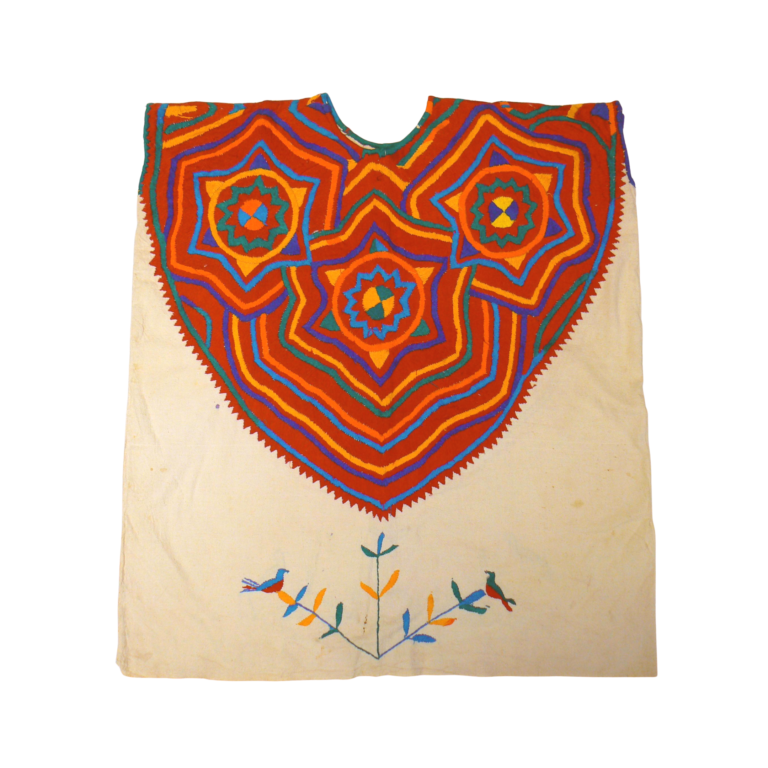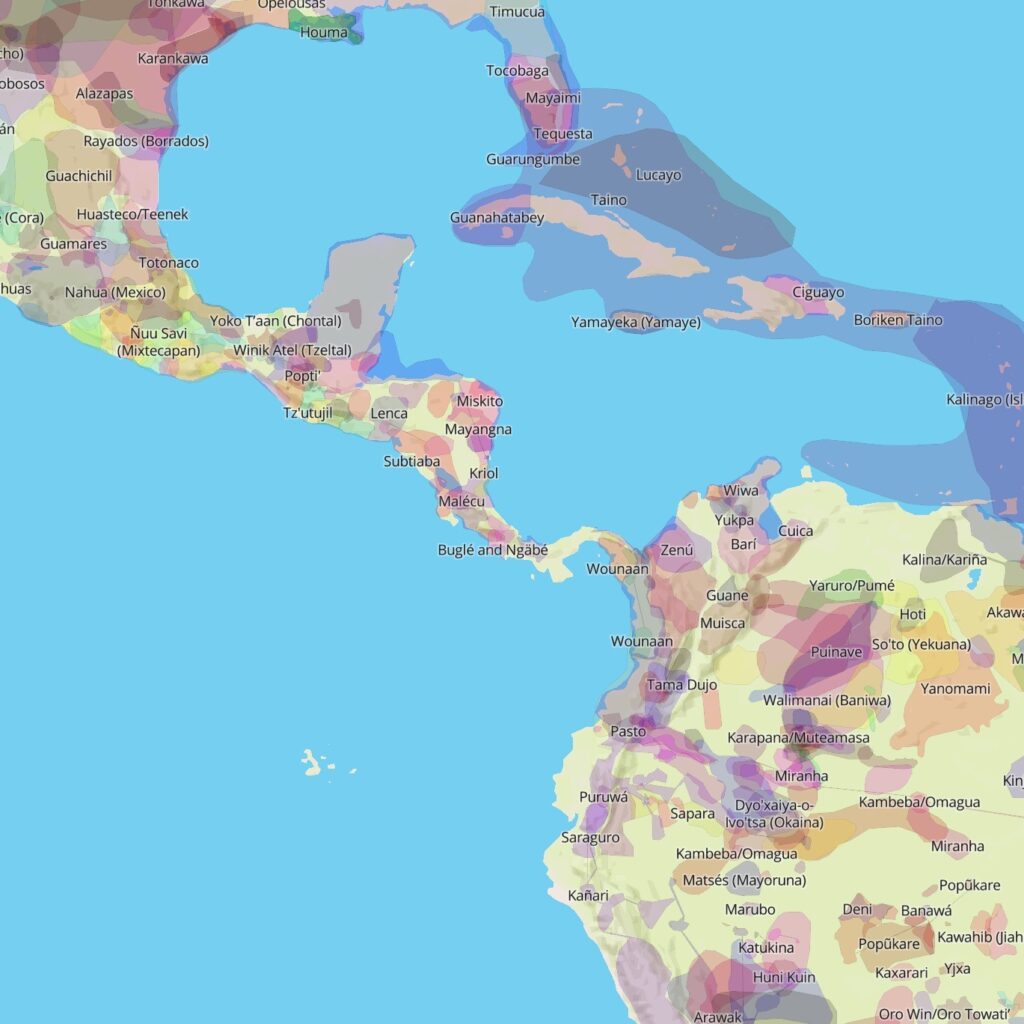
Huipil (Blouse)
Unknown Maker, Chuj Maya
San Mateo, Ixtatán, Guatemala
Late 20th Century
Cotton, cloth
NLA2011.01.AVE
Though huipiles have been made by Maya makers for many years, artists may adapt designs, techniques, and materials from other villages and European sources, in order to reimagine “their tradition according to their own aesthetic,” as described by Roxane Shaughnessy, a curator at the Textile Museum of Canada. The specific method of weaving and embroidering a huipil may vary depending on the maker and their culture, as well as the patterns, colors, and shape of the huipil. They may be ceremonial or for everyday use, and may feature geometric patterns, birds, stars, leaves, or other motifs. The panels are woven to the exact size and shape, then sewn without cutting, while in European textile production, the cloth is woven in long sections, then cut and sewn to shape. While the methods for creating huipiles are traditional, artists have been adopting and adapting different techniques to create their own representations of tradition, identity, and culture.
Shaughnessy, Roxane. Maya Textiles from Guatemala: Ancestry and Artistry. Toronto, ON: Textile Museum of Canada, 2013.
San Mateo, Ixtatán, Guatemala

